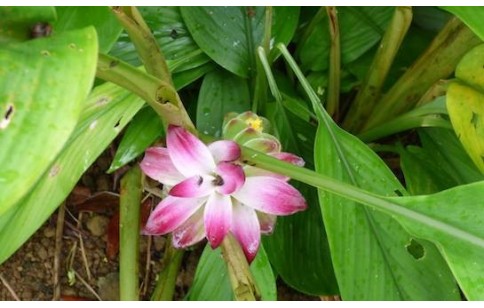- Code : #4745 S 20 mg
- Formula : C₁₉H₁₆O₄
- CAS : 33171-05-0
Curcuma longa
Curcuma longa, “Turmeric” in English and “Curcuma” in French, belongs to the Zingiberaceae botanical family. Native to India and spread to Southeast Asia, it is a herb that can reach up to 1 m.
The yellow-orange turmeric root is extensively used as a spice, food preservative, and colouring agent for food and material in India, China and South East Asia.
It has a long history of traditional therapeutic uses for its antioxidant, antibacterial, anti-inflammatory, analgesic and digestive properties and to treat skin irritations. It is under investigation for possible benefits in the treatment of cancer, Alzheimer's disease, liver disorders, and certain other diseases.
Its rhizomes major bioactive ingredients are curcuminoids (diarylheptanoids), mainly curcumin and essential oils, also flavonoids, phenolics, some important amino acids, proteins and a high alkaloid content. Curcumin, demethoxycurcumin, and bisdemethoxycurcumin are used as marker compounds for the quality control of rhizomes.

- Code : #B0054 5 g
- Code : #4739 S 20 mg
- Formula : C₂₁H₂₀O₆
- CAS : 458-37-7
- Code : #4746 S 20 mg
- Formula : C₂₀H₁₈O₅
- CAS : 22608-11-3
- Code : #5211 S 1 g
- Formula : C₁₀H₁₄O
- CAS : 89-83-8






